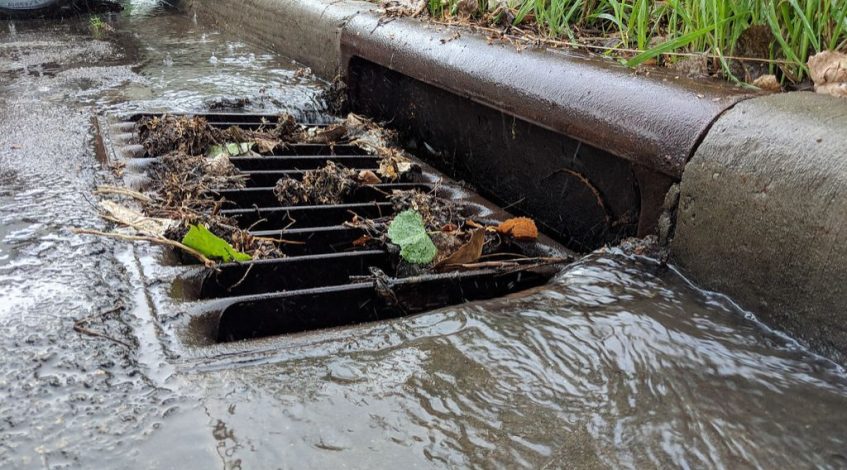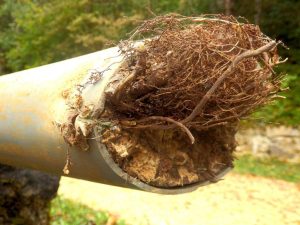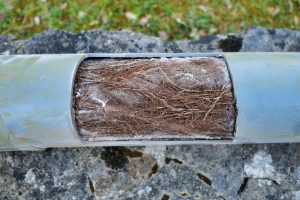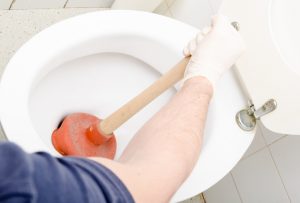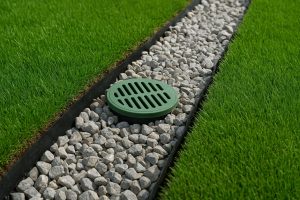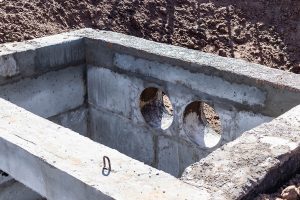Stormwater drains are a vital part of urban infrastructure. They do the heavy lifting when it rains – carrying runoff away from homes, roads, parks and footpaths to prevent flooding and water damage.
When they work as intended, most people don’t even notice them. But when they become blocked, the results can be dramatic and costly.
Blocked stormwater drains can cause water to back up into gardens, pool on driveways, seep into garages and even flood lower levels of buildings. In some cases, they contribute to localised flooding during heavy rain. So what’s causing these blockages in the first place?
Let’s look at the most common causes – some obvious, others less so – and what you can do to prevent issues before they become emergencies.
1. Leaf litter and garden debris
One of the most common – and preventable – causes of blocked drains is the accumulation of organic material, particularly fallen leaves. During autumn, leaves fall in huge volumes and often end up in gutters and storm grates. If not cleaned regularly, they wash into the drainage system during the next downpour.
Once inside the pipes, these soggy leaves form clumps that stick to the walls or collect at joins in the pipework. Add in twigs, grass clippings and general garden debris, and you have a recipe for a stubborn blockage. This kind of buildup is particularly common in leafy suburbs and streets lined with deciduous trees.
Prevention tip: Rake up leaves before it rains, clean out gutters every few weeks and don’t sweep organic matter towards the road.
2. Sediment and soil erosion
Eroded soil especially from driveways, garden beds or nearby construction sites often ends up in stormwater drains. During a heavy downpour, loose soil can be washed directly into the system and settle at the base of the pipes.
Over time, this sediment settles and narrows the internal diameter of the pipes. The more sediment that builds up, the less space there is for water to flow – until the drain can’t cope with even a moderate rainfall event.
This problem is exacerbated in areas with poor landscaping or where surface runoff hasn’t been properly managed.
Prevention tip: Stabilise soil with ground covers, mulch or grass. If you’re renovating or landscaping make sure soil isn’t exposed for long periods without protection.
3. Invasive tree roots
According to Plumber Near Me: “Tree roots are the most common cause of blocked stormwater drains, often forcing costly excavations”.
Roots are drawn to moisture, and even the tiniest crack in an ageing pipe can become an entry point.
Once inside, the roots can grow rapidly, forming a dense web that traps other debris and completely blocks water flow. In some cases, the roots themselves cause the cracks by pressing against weak points in the pipe.
If you have mature trees near your drainage system – especially species like gum trees, willows or figs – you may already be at risk.
Prevention tip: Don’t plant thirsty trees too close to stormwater lines. Have a drainage inspection every couple of years if your property is older or has large trees nearby.
4. Foreign objects and household waste
You’d be surprised how many items end up in stormwater drains that clearly don’t belong there. Everything from fast food wrappers and drink bottles to children’s toys, tennis balls and even furniture parts has been found clogging pipes.
In some neighbourhoods, storm grates are treated like rubbish bins – whether intentionally or out of laziness. But even small bits of rubbish can become big problems. Plastic bags and food wrappers in particular can catch on something in the pipe and start collecting other waste, creating a snowball effect.
More than 90% of litter found on Port Phillip Bay beaches comes from stormwater, according to Melbourne Water. That means what gets tossed into the street in your suburb might very well end up polluting beaches and bays – not to mention blocking vital infrastructure along the way.
Prevention tip: Dispose of litter properly and don’t place bins too close to street drains. If you see illegal dumping or overflowing public bins report them to your local council.
5. Poor drainage design or installation
Sometimes the problem starts with how the drainage system was built in the first place. If pipes are too narrow, poorly sloped or have too many sharp bends, water won’t flow smoothly. This increases the chances of debris getting stuck and forming a blockage.
In older homes, especially those built before the 1980s, stormwater pipes might be made from outdated materials like clay or asbestos cement. These are more brittle and more prone to cracking over time.
Additionally unlicensed or DIY installations – like backyard renovations or home extensions – can result in improper connections. This might include incorrectly routing downpipes or failing to include adequate water dispersion areas.
Prevention tip: Always use qualified, licensed plumbers when making drainage modifications. If you’ve moved into an older home, consider having the system checked with CCTV cameras.
6. Heavy rainfall and sudden storms
While not a traditional blockage, sheer water volume can overwhelm drains to the point of failure. Heavy rainfall, flash floods and extreme weather events dump more water into the system than it was ever designed to handle – especially in urban areas with lots of concrete and very little natural absorption.
Even a partially obstructed pipe can back up quickly when hit by torrential rain. This is a big problem in low-lying areas or older suburbs where the infrastructure hasn’t been updated to cope with modern weather patterns.
According to the Bureau of Meteorology, rainfall extremes in many parts of the country have increased over recent decades. This has put extra pressure on local stormwater networks and private drainage systems alike.
Prevention tip: Consider adding rain gardens, soak wells or permeable paving to your property to absorb excess water before it hits the drain.
7. Broken or damaged pipes
Pipes don’t last forever. Over time, materials degrade, joints shift, and pipes collapse – partially or fully. These breaks often create pockets where debris gathers, slowing the flow of water. Eventually these spots can lead to full blockages.
Heavy vehicles driving over shallow drainage lines, ground movement or building subsidence can cause pipe damage. Unfortunately, most people don’t know their pipes are damaged until it’s too late and the water has nowhere to go
Prevention tip: Get your drains inspected if you hear gurgling sounds, unusual odours or repeated blockages. Pipe relining may be a cost-effective alternative to full replacement.
Why stormwater drain maintenance matters
Stormwater drains might seem like background infrastructure – out of sight, out of mind – but when they stop working, the consequences are hard to ignore. From flooded backyards to water-damaged garages and ruined landscaping, a blocked drain is more than an inconvenience.
By being informed and proactive, you can reduce your risk. Regular maintenance, responsible gardening and prompt action when issues arise are all key to keeping your stormwater system flowing.
And if something seems off don’t wait until the next storm to find out. Get a professional inspection from a trusted local plumber and fix the problem before your lawn turns into a lake.

